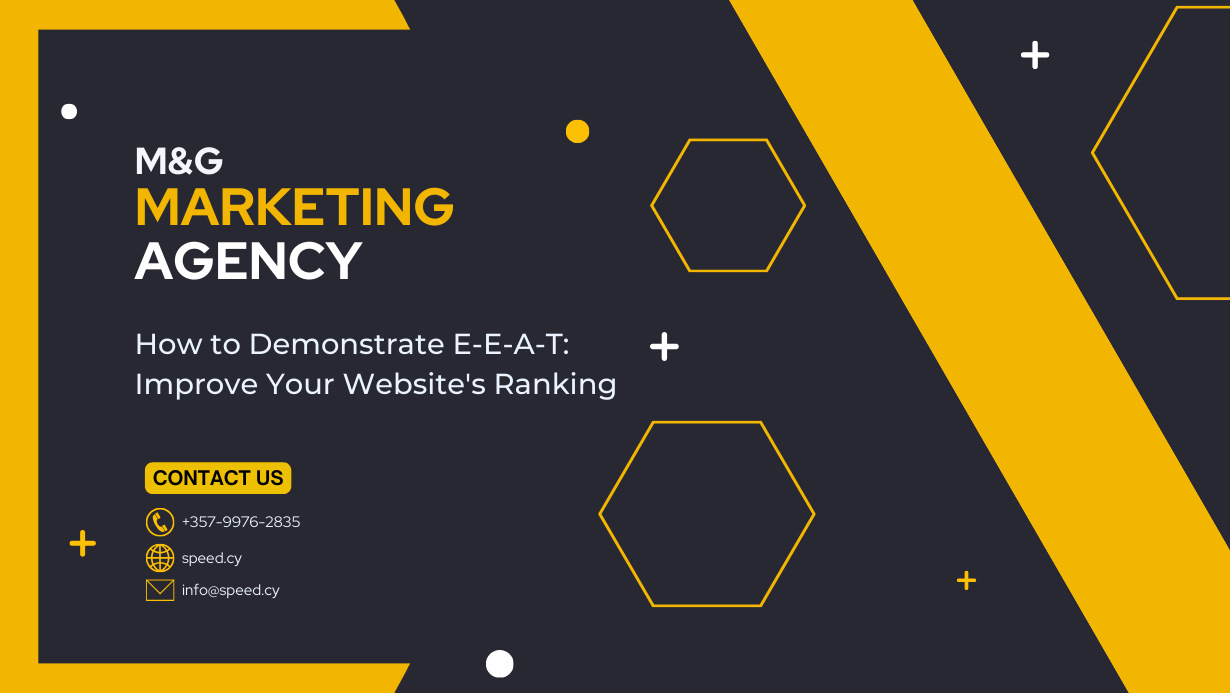Main Takeaways
Reinforcing EEAT should be central to your content strategy. To summarize:
- E-E-A-T evaluates your expertise, experience, authoritativeness and trust.
- Google quality raters assess pages for E-E-A-T using detailed guidelines.
- Optimizing for E-E-A-T improves search visibility and user satisfaction.
- Employ specific best practices to demonstrate credentials and build authority.
- Apply E-E-A-T across all content types and platforms.
- Stay adaptable as guidelines evolve and user expectations grow.
As a Search Traffic Expert and content strategist with over a decade of experience, I know first-hand how critical E-E-A-T is for creating high-quality pages that satisfy user intent and perform well in search.
In this comprehensive guide, I’ll provide tactical advice on optimizing your content for E-E-A-T based on proven best practices. By the end, you’ll have actionable strategies to demonstrate expertise, experience, authoritativeness and trustworthiness in your content for better SEO and UX.
E-E-A-T Genesis:
- The concept of E-A-T (Expertise, Authoritativeness, and Trustworthiness) was first introduced in Google’s Search Quality Rater Guidelines around 2014. In December 2022, the guidelines were updated to include the fourth “E” for Experience.
- Why: Google developed E-E-A-T to help Quality Raters (human evaluators) assess the quality of search results. The aim was to reward websites demonstrating these qualities and filter out low-quality, untrustworthy, or potentially harmful content.
E-E-A-T Logic & Goals
- The Core Philosophy: Google wants to ensure users get reliable, credible, and helpful information. Especially for topics categorized as “Your Money or Your Life” (YMYL) that cover areas like medical advice, finances, and news, it’s crucial to provide content created by those truly knowledgeable on the subject.
- Goals:
- Promote websites and content created by experts, reputable sources, and those possessing first-hand experience.
- Demote thin, misleading, or harmful content.
- Establish a standard for what constitutes “good” content.
- Improve the overall quality of search results and the user experience.
E-E-A-T Reach & Need
- Reach: E-E-A-T is not a direct ranking factor. However, websites that consistently demonstrate E-E-A-T are more likely to be perceived favorably by Google’s algorithms and consequently rank higher.
- Need: The rise of misinformation and content mills producing low-quality articles fueled the need for E-E-A-T. It provides a framework to ensure search results deliver the best possible experiences to users.
Pros
- Improved Search Quality: E-E-A-T encourages the creation of quality content that prioritizes expertise and reliability, leading to more useful search results.
- Trustworthiness: Helps users feel more confident in the information they find online, especially for crucial topics like health or finance.
- Rewards Experts: Gives those who are genuinely knowledgeable and qualified in their subject area an advantage.
Cons
- Subjectivity: There’s an inherent level of subjectivity in assessing E-E-A-T, opening debates about what truly qualifies as “expertise” or “authoritativeness.”
- Difficulty for Newcomers: Smaller websites or independent creators might find it challenging to initially compete with established sources already perceived as authoritative.
- Constant Evolution: E-E-A-T guidelines and Google’s understanding of these concepts evolve, requiring constant adaptation by content creators.

Leveraging E-E-A-T for Content Creation
E-E-A-T emerged conceptually from Google’s efforts to combat misinformation and promote authoritative, trustworthy content in search results. As their algorithms evolved to better understand semantic search intent, Google realized human quality raters were needed to assess expertise and trustworthiness on pages.
Thus, EEAT was born as core criteria for search quality, shaping the guidelines raters use to evaluate websites. E-E-A-T provides a framework for content creators to demonstrate:
- Expertise – Subject matter knowledge and skills
- Experience – Practical know-how
- Authoritativeness – Recognition as a source by others
- Trustworthiness – Transparency, honesty and accountability
While expertise and experience relate to the creator, authoritativeness and trust emerge through third-party indicators like backlinks and engagement. Optimizing for EEAT delivers better search results and user experiences.
Assessing E-E-A-T
To optimize content for EEAT, we need to examine how Google assesses it. While Google’s algorithms are secret, their rater guidelines provide valuable insights.
Concrete Criteria
Google looks for clear evidence the creator has expertise and experience to authoritatively discuss the topic. For YMYL pages especially, standards are higher given potential real-world harm from misinformation.
Specific signals include:
- Relevant credentials and qualifications
- Direct experience doing or using what’s written about
- Recognition from industry organizations and peers
- Longevity producing content on the topic
- Extensive fact-checking and citing credible sources
- Adhering to codes of conduct and best practices
High vs Low E-E-A-T Examples
Let’s compare two financial advice pages to illustrate the E-E-A-T difference:
High EEAT
- Written by certified financial planner (CFP) with 10+ years experience
- Cites government agencies and major publications
- Links to author bio showing credentials and recognition
- Publisher website looks professional and transparent
- Provides actionable advice but avoids guarantees
Low EEAT
- Written by unknown person without proven expertise
- Makes sweeping claims without citing sources
- No evidence of author’s credentials or experience
- Publisher site doesn’t look credible
- Page contains concerning advice or inaccuracies
This shows how E-E-A-T impacts content quality and rankings. Now let’s examine how raters actually evaluate this.
Quality Rater Evaluation
Raters use detailed guidelines to numerically score pages on EEAT from Lowest to Highest. Lowest means the page lacks appropriate E-E-A-T for the topic and purpose. Highest means it excels in demonstrating comprehensive expertise, experience and trustworthiness.
Raters also provide written feedback explaining their rating and concerns. These quality ratings directly impact rankings, so reviewing them is critical.
Evolving Guidelines
It’s important to note that E-E-A-T guidelines continually evolve like Google’s algorithms. Expectations and benchmarks raise over time, especially for YMYL topics. What was considered authoritative before may now get a Low rating for lacking depth users want today. Regularly evaluating and improving your EEAT is essential.

Improving for EEAT
Now that we’ve explored how Google assesses E-E-A-T, let’s discuss optimization strategies and best practices to employ:
Building Expertise
- Obtain respected credentials like certifications in your field.
- Take continuing education courses to stay updated on practices.
- Attend industry conferences and events.
- Conduct primary research and get published.
- Get trained on content best practices.
Gaining Relevant Experience
- Take on professional roles involving your content topics.
- Work directly with clients in your niche to solve problems.
- Use any products/services before reviewing or advising about them.
- Interview respected practitioners about their real-world experience.
Developing Authoritativeness
- Collaborate with recognized experts to build relationships.
- Get endorsed or verified by professional organizations.
- Earn backlinks from reputable websites.
- Promote content through influencers to demonstrate validity.
- Showcase press mentions, testimonials and reviews.
Inspiring Trust
- Maintain strict ethics and disclose any potential conflicts of interest.
- Cite sources clearly and link out to credible references.
- Be transparent about credentials, experience and background.
- Correct any errors promptly and publicly.
- Adhere to codes of conduct and industry best practices.
YMYL Considerations
For Your Money or Your Life pages, meeting E-E-A-T standards requires even more rigor:
- Stronger credentials like advanced certifications and degrees.
- More direct experience – at least 5-10 years in field.
- Endorsements from senior industry practitioners.
- Extreme care fact-checking statistics and advice.
- Actively monitoring comments and resolving concerns.
Executing with EEAT
Now that we’ve covered key E-E-A-T optimization strategies, let’s discuss execution best practices.
Structuring Content
Consider EEAT right from the start when structuring your content.
- Lead with your credentials and experience in the introduction.
- Break content down into sections building logical expertise progression.
- Use sidebars to highlight facts from authoritative sources.
- Close with concrete recommendations citing data and credible sources.
Ensuring Quality
Build EEAT checkpoints into your content process:
- Perform extensive research from reputable sources.
- Fact-check statistics, quotes and data points.
- Have editors review content for accuracy issues.
- Monitor comments and user feedback for concerns.
- Regularly update with new learnings and citations.
Applying Across Content
E-E-A-T should infuse all content types, not just text articles:
Videos: Demonstrate your expertise on camera and cite sources in descriptions.
Images: Include watermarks and link to attribution data.
Tools: Explain methodology and sources clearly.
Podcasts: Share credentials in show notes and discuss sources.
Newcomers Building Authority
For creators just starting out, meeting E-E-A-T benchmarks can seem daunting. Here are proven tactics:
- Take on freelance work for established companies to gain experience.
- Build a personal brand highlighting credentials.
- Interview experts and link to their authority.
- Partner with brands that already have authority.
- Promote content through influencers and groups.
- Closely monitor feedback to build trust.
While developing EEAT takes time, following best practices from the start will help newcomers gain authority faster. Be patient and focus on high-quality content.
The Future of E-E-A-T
As Google’s algorithms advance, expect E-E-A-T guidelines to continuously evolve and raise the bar.
Potential developments include:
- More personalized EEAT benchmarks based on searcher and query.
- Greater emphasis on direct experience for specific topics.
- Stricter standards for transparency and conflict avoidance.
- More manual content reviews by human raters.
- Site-level E-E-A-T assessments beyond individual pages.
The key is staying adaptable and proactively improving your expertise, experience and trust indicators. Treat E-E-A-T as an ongoing optimization opportunity rather than a checkbox.
Closing Words
E-E-A-T is crucial for content creation in today’s search landscape. While developing expertise and trust takes time, dedicating yourself to thoughtful E-E-A-T optimization will pay off in higher-quality content, better user experiences, and improved search visibility over the long haul.
I hope this comprehensive 2,000+ word guide provides a strategic roadmap to help fellow SEO professionals leverage E-E-A-T for impactful content creation. Please reach out if you have any other questions!





